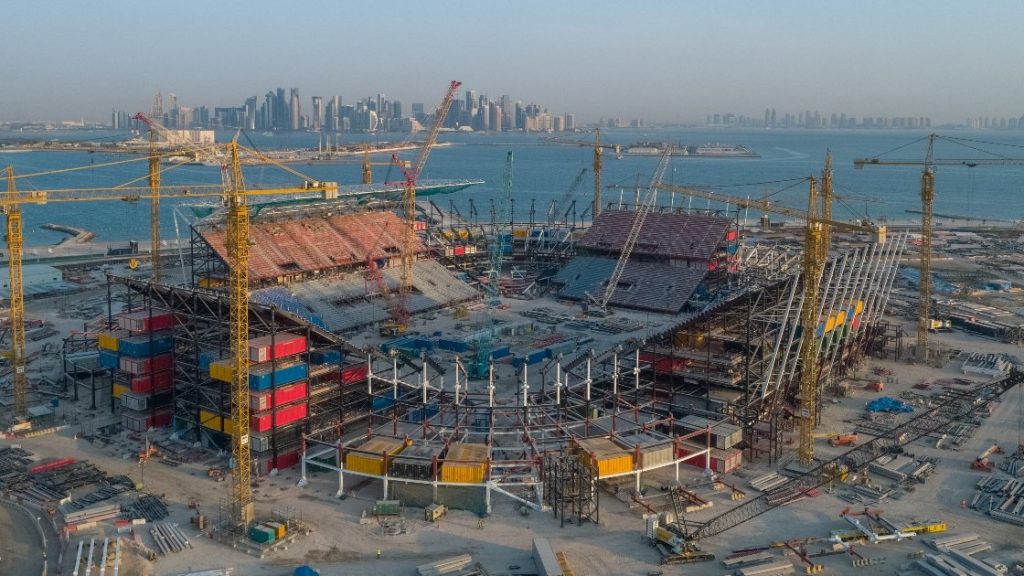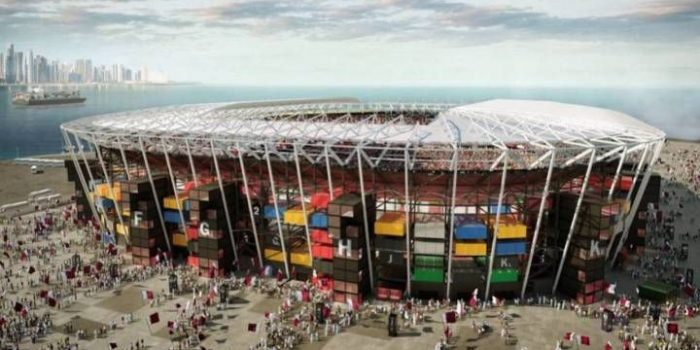Stadium 974, named after Qatar’s country dialling code and the number of recycled ocean shipping containers used to build it, has been hailed as a game-changer in mega-event sustainability.
Built by Spain’s Fenwick Iribarren Architects, the stadium is made with about 1,000 shipping containers and is easy to disassemble and rebuild. The 974 Stadium, formerly known as the Ras Abu Aboud Stadium, is located on the coast near a port and airport in Doha, Qatar’s capital.

The stadium has a room for 40,000 spectators. It’s made up of a steel framework with a partial roof on top, with seating, concession stalls, bathrooms, and other amenities housed within the containers themselves. Many of the containers used were the ones that were used to transport construction materials to the construction site.
When the 2022 World Cup kicks off, stadium 974 will be one of eight World Cup stadiums hosting 32 national teams in a total of 64 matches until the finale. After that, the stadium will be dismantled/recycled or reconstructed elsewhere after the games are over.
“The unique modular design used for this stadium has allowed fewer building materials to be used compared to traditional stadium developments,” says Fenwick Iribarren Architects.
“Therefore, it is an emblematic sustainability project that will inspire future organizers of major sporting events. There is also the circumstance that many of these containers used for the construction of the enclosure were used to transport construction materials to the site. 974 Stadium aims at the certification of the five-star Global Sustainability Assessment System, both for its design and for its construction.”

The stadium deserves some merit for how it can potentially be taken apart and rebuilt. Moreover, it is a clever public relations move for a country that stands out as the biggest per capita emitter of CO2 per person on the planet.
Bodour Al-Meer, head of sustainability for Qatar’s local organizing committee, said the country seeks to balance growth and the environment.
“Qatar is a small and rapidly developing country, and hosting the World Cup has accelerated our national development plans,” she said, speaking for the Qatar organizing group, called The Supreme Committee for Delivery & Legacy.
“Our vision for our country is to have harmony between economic growth, social development and environmental protection,” she said. “The environmental section of the FIFA World Cup Qatar 2022 Sustainability Strategy is perfectly aligned with our national goals.”

This appears to be good for the environment, although there is one obvious flaw: the metal boxes’ poor thermal performance, which is especially troubling in such a hot part of the world. However, Fenwick Iribarren Architects, on, seems highly confident, relying solely on the local breeze.
“In addition, due to its innovative design and seaside location, the stadium has natural ventilation, which avoids the need for cooling technology,” adds the firm.
Sources: Supreme Committee for Delivery & Legacy, Fenwick Iribarren Architects


